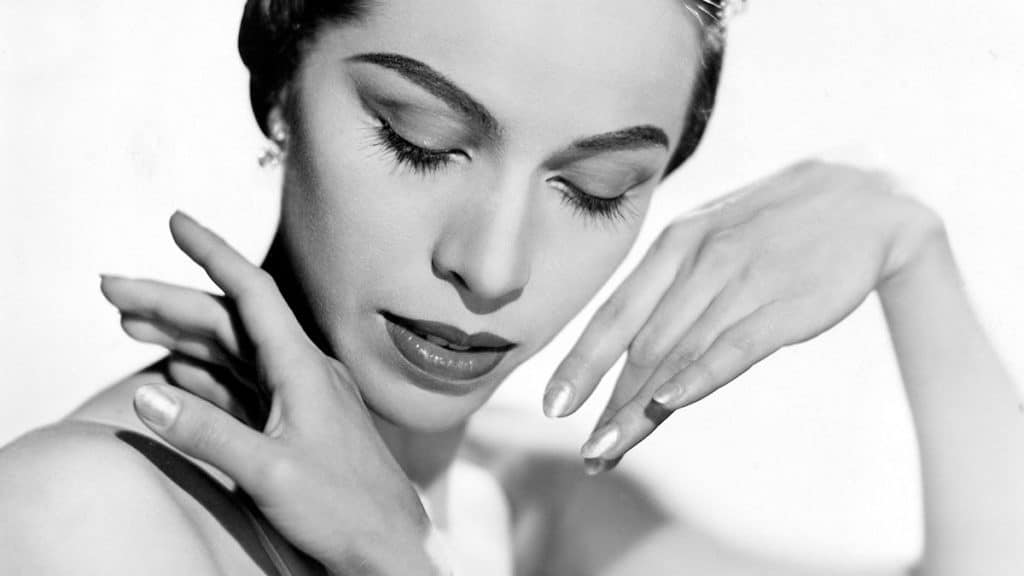Maria Tallchief was born Ki He Kah Stah Tsa (Elizabeth Marie “Betty” Tallchief) in Fairfax, Oklahoma on January 24, 1925. She is a member of the Osage Nation, one of the First Nations of what are now Oklahoma, Kansas, Missouri and Arkansas.
She is remembered as America’s first prima ballerina and the dancer who helped make George Balanchine’s “The Nutcracker” the world’s most popular ballet.
Maria TallChief was a Natural Dancer
She was tall, beautiful and could really dance. Genius usually shows itself early. Like many other great ballerinas, Tallchief was a natural as a child. She was smart too, so smart that her teachers had her skip over the first two grades in elementary school.
Tallchief’s story is filled with disappointments, but she always picked herself up and kept going. For anyone to become a prima ballerina is exceptional. To come from a marginalized community in that time period is truly incredible. Even today we have to be twice as good and three times as clean just to be treated equally.
Dance is a Natural Expression in Many Indigenous and African Communities
In many Indigenous cultures around the world, dance is not some special thing that maybe we do or don’t do. Dance is a regular part of life.
We dance to show that we belong to our family and to our community. Our dancing also shows our individuality within our community. We dance for faith and we dance for love. It’s all the same thing, isn’t it?
Get Yourself to a Place Where Luck Can Make Your Fortune
There is a lesson for today in Maria Tallchief’s story. We are at a moment when America is ready for and even hungry for culture from people of color. Life doesn’t usually deliver your dreams right away, but if you position yourself close to your dream, talent, hard work, and luck may make it come true.
In 1933 Tallchief’s family moved to Los Angeles so she and her sister could study. Ballet is an Italian-French court dance, but was preserved in Russia and Denmark when the French Revolution ended the French monarchy. In Los Angeles, she got to meet and work with several Europeans. She performed in “Chopin Concerto” for Polish choreographer Bronislava Nijinska. She got an audition for Serge Denham, the director of Ballet Russe de Monte Carlo, the successor company to Ballet Russes which relaunched ballet through its American tours. Still nothing happened.
George Balanchine and New York City Ballet
Look at Maria’s hands in the photo. That’s Balanchine technique. Just like on the street, a dancer’s hands reveal what dance gang they are from.
Tallchief moved to New York City in 1942. She looked up Serge Denham, but was told Ballet Russe de Monte Carlo was not looking for dancers. She got a callback a few days later because the company had a Canadian tour which most company dancers couldn’t do because they were Russian immigrants without U.S. passports. Tallchief got the job and was then hired permanently to replace a dancer who got pregnant.
Once she placed herself near her dream, this is what happened. On her first day as a full company member, Tallchief’s old teacher Nijinska shows up to stage “Chopin Concerto,” the very piece Maria danced for Nijinska in Los Angeles. Tallchief got a promotion and was made the understudy for Russian prima Nathalie Krassovska.
When Krassovska left the company suddenly, Tallchief got to perform. New York Times dance critic John Martin gave her rave reviews. Still nothing really happened.
In 1944, George Balanchine was hired to stage “Song of Norway.” They worked together and he cast her in important roles. Probably both were drawn to the elegance of each other’s craft. They became a couple, but that’s not the most important part of the story.
Tallchief joined Balanchine in Paris when he was directing the Paris Opera Ballet in 1947. There she became the first American to dance with that legendary company.
When the couple returned to New York, Balanchine’s Ballet Society became New York City Ballet and Tallchief was its first prima ballerina. Balanchine later created the lead role in “The Firebird” for her. In 1949, dancing that role made her a big star.
In 1954 Balanchine staged “The Nutcracker” with Tallchief as the Sugarplum Fairy. Balanchine’s choreography and Tallchief’s talent and passion turned an obscure ballet into the world’s most popular ballet, an American Christmas tradition.
Balanchine continued to create important roles for Tallchief including the swan queen in “Swan Lake.” Behind every great man, there is a great woman. Balanchine is remembered for his incredible talent, but Tallchief’s talent helped make him a star too.
A Career of Pinnacles
Tallchief’s career is an entire mountain range of peaks. She danced for American Ballet Theatre, became the first American to perform in the legendary Bolshoi Theater, partnered with Nureyev for his American debut and much more.
It might seem like a stretch to say that Maria Tallchief’s Indigenous heritage prepared her for greatness, but it’s really not.
Greatness begins at home. In many Indigenous homes, we dance for family, community, faith and love. Probably without understanding what they were seeing, audiences responded to the tall, beautiful dancer who performed with the Great Spirit. That’s what artists do, and that’s why we love them.

